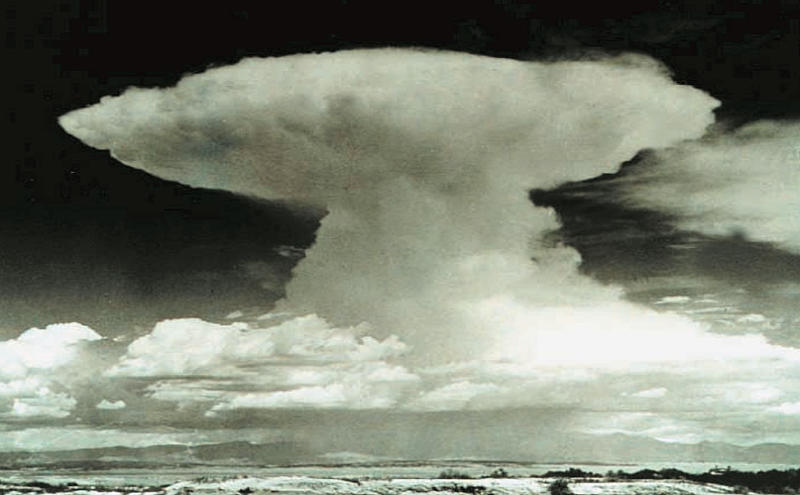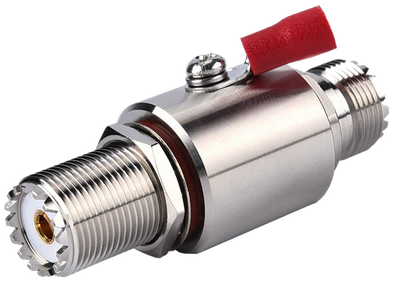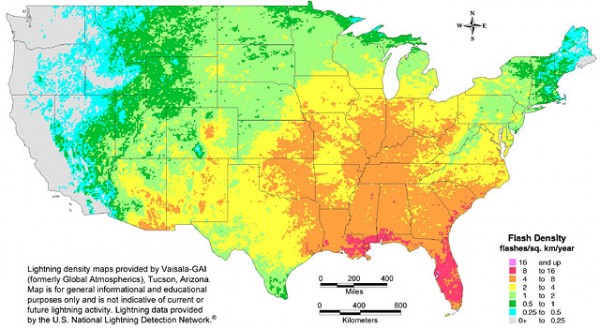Lightning Protection For HF/UHF/VHF Antennas

Do you have a HF / UHF / VHF Radio (base station) in the house? If you do, then you probably have an antenna mounted outside. That antenna should have lightning protection.
The best place for a UHF/VHF antenna (pretty much any antenna) is up as high as possible. And that’s probably what you’ve done.
There’s a problem with that. They are lightning magnets mounted way up high. A nice target. Looks like a lightning rod… Especially antennas that are typically vertical, or vertically oriented – way up high.
Lightning seeks the best path to ground. The path of least resistance to ground. If lightning strikes your antenna, the path might go down the feed line and to your radio. The radio will be destroyed. It could even start a fire. Or cause injury.
Lightning Protection For Antennas
Lightning protection is important. Even if you live in a region less susceptible to thunderstorms and lightning strikes, that antenna is still a juicy target. So do something about it…
You need to install lightning protection to your antenna system. This will (hopefully) channel that energy to “ground”. It will (hopefully) protect your radio and your home. Better stated, it will help minimize the damage.
Lightning Arrestors
You want a lightning arrestor for protection. There are many brands and types that can get the job done. Obviously your choice of lightning arrestor needs to have the right type of coaxial cable connections for your feed line.
First, to be clear, a direct strike has way too much energy to be completely stopped by an ordinary feed line lightning arrestor. However it will most certainly help with lesser lightning. It will help protect your radio from damaging static electricity and lightning induced surge.
With that said, the best thing to do… You should always completely disconnect your radio’s antenna cable before an impending thunderstorm. Ideally you would take that cable and hang it outside a window (just close the window onto the cable to keep rain from getting in during the storm!).
Best Inline Lightning Arrestor For Base Antenna Protection
Like I said earlier, there are plenty to choose from.
Based purely on apparent popularity and good reviews, you might look at this one:
>> PL259 Socket (UHF Female) to SO239 Socket (UHF Female)
(view on amzn)

Wide-Band Performance from DC-1GHz, insertion loss 0.1dB, and replaceable Gas Tube Element.
Lightning protection for HF/VHF/UHF. For HAM Radio Gear, 2-Way Base Stations, CB Radio, Marine Radio, Business band commercial radio, GMRS base stations, and more…
Antenna lightning protection can get pretty involved, and for good reason! There are more ways to help mitigate this problem, especially if you have a tower, multiple antennas, etc.
But this simple easy-to-install lightning arrestor (or any similar device) is an inexpensive yet effective way to help protect your radios.
Lightning Strikes In The U.S.
Most of you know that Florida has the most lightning in the United States. However again, it can happen anywhere! And you know it!

[ Read: Lightning Strike Risk & Safety | Facts | Tips | Dangers ]
